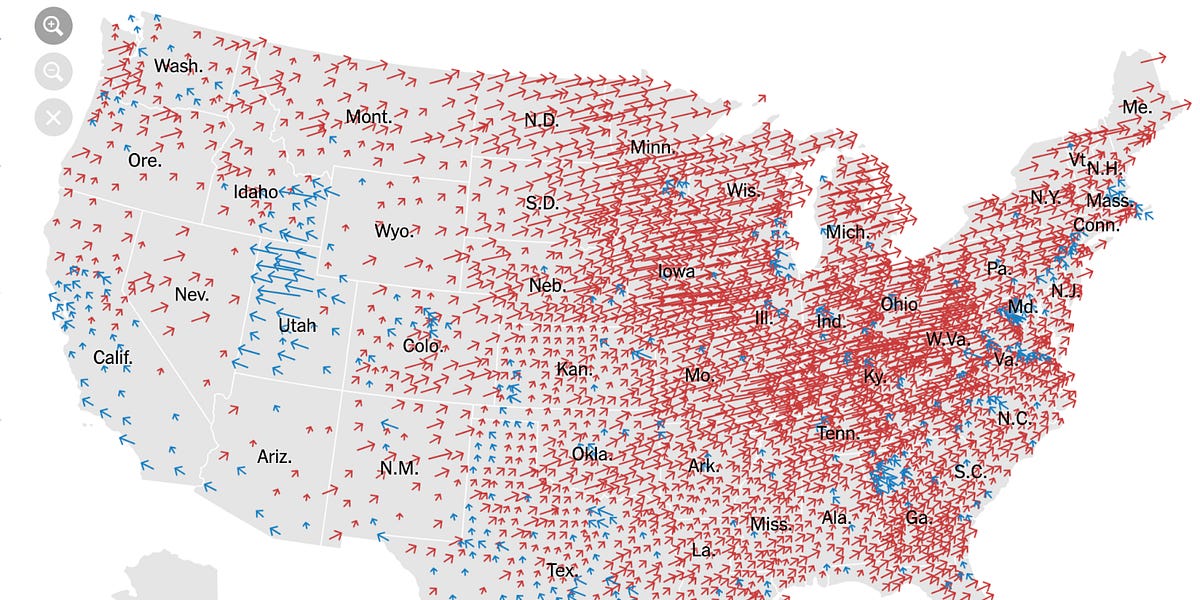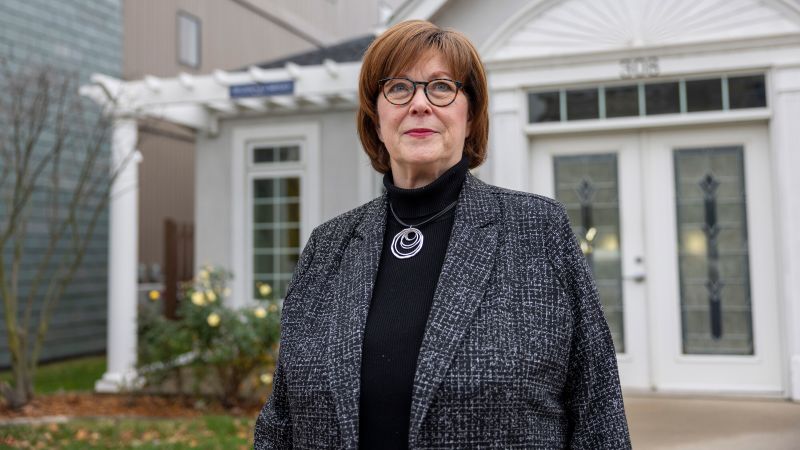Yes, but he never makes a pass/fail call.

The polls are close, but that doesn’t mean the results will be
A normal polling error in either direction could give either candidate a decisive victory.
Yes, but he never makes a pass/fail call.
But is that the purpose of polling and pollsters?
Exactly. YET AGAIN I need to explain to bordelond that the difference between 75% and 78% is 3%…and the difference between 49% and 52% is…wait for it.…3%! Naturally we attach greater significance to the latter in contests where the rules are such that 50% happens to be the critical threshold, but that’s our problem, not the poll’s or the pollster’s or the poll aggregator’s or the poll-based modeler’s. It just isn’t.
(Ann Selzer was way off, that’s true.)
Nate Silver isn’t a pollster.
Yes, but he draws conclusions from polls. If said polls aren’t designed or intended to draw “pass/fail” conclusions, I don’t see how he’d be able to do so.
YET AGAIN I need to explain to bordelond …
We’re talking past each other. I’m not talking about the math at all.
I take issue with anyone saying Nate Silver “got it right”. Not because of the math. Rather, because his model spit out an equivocal forecast that would be considered “getting it right” for any non-landslide outcome.
Yes, but he draws conclusions from polls. If said polls aren’t designed or intended to draw “pass/fail” conclusions, I don’t see how he’d be able to do so
Very good. Then he didn’t “get it right”. Or wrong, either, to be fair.
But that’s only because the US really is split close to 50-50 on the question of “is Trump a fascist moron or God’s gift to entertainment.”
If Nate Silver were doing his thing in, say, 1984, he’d tell you Mondale had no chance. Sure, you’d be like, “duh!”…which is why the only value I get out of polling analysts (like the two Nates and Galen Druke) is their takes on the breakdowns (“which way are old, suburban Latina women in Vermont trending…and, most importantly, why?”, etc.). I don’t need some “expert” to tell me that, when almost all polls show the electorate to be about evenly split, either team could easily win. A coin-toss. Well, duh!
And I certainly am not asking them to lie to me and say they are confidently predicting one team to win, given the split electorate. Why do you keep asking or expecting them to do such a thing?
I take issue with anyone saying Nate Silver “got it right”. Not because of the math. Rather, because his model spit out an equivocal forecast that would be considered “getting it right” for any non-landslide outcome.
Nate Silver’s analysis was very consistently that polling was close enough and so many states were toss-ups that this particular election was a toss-up and it was very likely with a near tie in polling that one candidate would end up beating the polls by 3ish percent across the board and sweep the toss-up states. And yes, it didn’t take a genius to make that prediction, but it’s mostly that a big debate with election forecasting this year was whether Silver’s coin flip prediction was too cautious and he really should’ve seen that Harris was a favorite for this or that reason.
He also didn’t overweight a bunch of little pieces of data that some liberal pundits were giving outsized importance to (the sometimes extreme measures that pollsters were taking to avoid missing the Trump vote again, the signs of some level of poll herding, specific good signs like Selzer’s poll) – he just threw them in the model with all of the other data, some of which gave small bits of equally good evidence for Trump.
Trump is absolutely destroying the predictions; they dramatically underestimated him.
Trump will exceed the popular vote guess by around two percent once all the votes are in, which is well within the expected MOE and about what he did in 2016.
Actually, it looks like the Nate Silvers and other pollsters were significantly wrong. Trump is absolutely destroying the predictions; they dramatically underestimated him.
As has been stated, Nate Silver is not a pollster and his model proved to be correct.
Silver posted, in a free article, a while back that the most likely results were either a Harris landslide in the swing states or a Trump landslide in the swing states. Each was about 25% of the model results. If Trump wins them all, that’s well within the model.
Exactly. And Silver was still saying this was the case going into the election.
Nate Silver’s final model result before the polls closed was that Harris would win in 50.015% of the 80,000 simulations. As he stated on his website on Tuesday morning:
“… From the model’s standpoint, though, the race is literally closer than a coin flip : empirically, heads wins 50.5 percent of the time, more than Harris’s 50.015 percent.”
This is the part that people focused on, but he went on to say that even though his model predicted that it was equally likely that each candidate might win, this did not translate to the final results being particularly close.
The reason for this is that it was quite likely that one candidate or the other would sweep all of the swing states, which is exactly what happened.

A normal polling error in either direction could give either candidate a decisive victory.
Nate Silver saying before the election that there was a 50/50 chance of either candidate winning, and more importantly that either candidate could also have a decisive victory is demonstrably not the same thing as dramatically underestimating Trump’s chances of winning.
I take issue with anyone saying Nate Silver “got it right”. Not because of the math. Rather, because his model spit out an equivocal forecast that would be considered “getting it right” for any non-landslide outcome.
I’m almost in the same boat. He wasn’t committed enough to be considered as “getting it right”. However, he didn’t get it wrong, either. So it doesn’t falsify his predictions.
(It also doesn’t mean that there’s anything wrong with his methodology. Sometimes there can be too many variables to make an educated guess. It’s not even useless if it always comes to a nebulous conclusion. If it did, and he was correct in that, it would show that polling is not all it’s cracked up to be.)
P.S. it wasn’t just Nate Silver either. The final prediction at 538 was Trump winning 53% of their simulations, and The Economist predicted that Harris would win in 56% of their simulations. Just about everyone was saying the final result was equivalent to a coin flip. I fail to see how that equates to dramatically underestimating Trump’s chances.
Really they were saying all that was possible to say: the standard systemic error is likely to move the actual results all two or three points one way or the other. We have no way to which way but odds were great one or the other would basically sweep the swing states as a result.
I was fairly convinced of which way was more likely and was wrong.
Selzer, who had previously been one of the most accurate pollsters in America for the past twenty years, has retired after she was wrong about Iowa by 16 percentage points.

Famed pollster J. Ann Selzer will end her election polling operation after her final survey for The Des Moines Register failed to accurately capture former President Donald Trump’s strong support in the 2024 election, resulting in a 16-point miss.
He is treating her as an enemy to be locked up:
Trump calls for probe of famed Iowa pollster J. Ann Selzer after she quits role
“She knew exactly what she was doing," Trump wrote of pollster J. Ann Selzer, 68, who announced her departure from political polling on Sunday.
Part of the polling error is because lazy Iowa Trump supporters were going to stay home until they heard, when the poll was publicized, that they were apparently in a swing state. As for lazy Harris supporters, Democrats have a higher education level and are, I believe, more likely to vote regardless. Yes, both Donald Trump, and a great many progressives, believe just the opposite!
Also see:
What a review of the pre-election Iowa Poll has found
Part of the polling error is because lazy Iowa Trump supporters were going to stay home until they heard, when the poll was publicized, that they were apparently in a swing state.
The overlap between lazy Trump voters and people who consume enough news to hear about a Selzer poll is not 16 points, I’d be surprised if it were even 0.1 of a point.
She was considered the gold standard pollster as far as Iowa is considered. Missing by 16 points certainly is HUGE and sure put a dent on the credibility she built up all these years…16 points is way outside the polling error margins.
Missing by 16 points certainly is HUGE and sure put a dent on the credibility she built up all these years…16 points is way outside the polling error margins.
Despite the negative reply when I said it before, I still think the publicity given this poll, within Iowa, disproportionately pushed Republicans to get out and vote. Democrats now need low turnout!
But most of the miss was because of a binary decision every pollster had to make as to whether to weigh by recalled 2020 vote. Selzer chose not to, and that was a mistake.
It’s explained a bit more in Nate Silver’s post-mortum:

Why it can’t fix our messy politics.
Despite the negative reply when I said it before, I still think the publicity given this poll, within Iowa, disproportionately pushed Republicans to get out and vote.
That’s possible, but we have no evidence, so it’s just a guess, and honestly I struggle to believe such an effect changed the vote by one person in six.
What we KNOW is that the Selzer poll was just a fluke or an error. (The fact it was absurd was pretty evident already, come on.) Relying on it to predict what was going to happen was silly.
Irrespective of Selzer’s polling in 2012 or whatever, it was one poll, a small one, among hundreds, and a complete, insane outlier. It correctly didn’t change much in the eyes of good analysts like Silver and 538. Polls have outliers; that’s why we look at ALL of them.
Looking at the polls as a whole and solid analysis of them, it was obvious Trump was a slight favourite, wasn’t it? How was polling wrong?